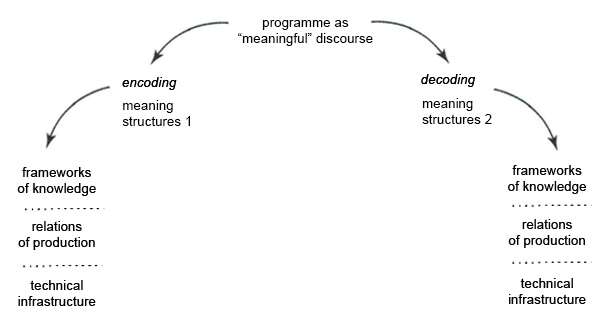
Halls theory of communication/media is one of Stuart Halls most famous theories. Encoding and decoding is the idea that the producers create messages for the audience to decode, however audiences don’t necessarily ‘decode’ them in the way intended. This can be a simple construct, such as red to symbolise danger or love, or this can be a continuous process, such as if a character is often shown with green lighting / background this could reflect them being deceitful or jealous.
An example is in Detroit: Become human, this game centres around three Androids. Connor is an Android working for detectives, we find out towards the end of the game he was programmed to deviate as a plan B to find the android resistance.
The opening scene with Connor. The producers create messages through their choice of sound, camera angles and mise-en-scene. As the scene opens, there is a black screen and you can hear a coin being flipped, then you see the back of Connor, with “Android” written on his back. The use of the coin reflects that he is a ‘deviant’ (an android that breaks from its programmed purpose, developing consciousness) as he is doing something to keep himself entertained, but an android shouldn’t get bored. We see Connor flicking the coin between his hands throughout the game. The audience is intended to interpret this as him being a deviant, however it could be interpreted as him ‘calibrating himself’.
As you gain control of Connor, the first choices you can make are to analyse a picture of the family and then save a fish. The choice to save a fish again reflects that Connor was made to deviate as an android shouldn’t care about it. This will make his ‘software instability’ go up, which makes him more likely to deviate at the end. The audience is intended to decode this as him being a deviant, however audiences may interpret this as part of his mission to save the family.
Throughout the game the producers include messages that Connor is a deviant, the main being his fear of deviating, as an Android shouldn’t have fears. Overall, this game is great example of encoding and decoding as the producers do this throughout, especially through the messages of Connor being a deviant from the beginning. The game is also made with the intention of being replayed for different endings, so players can decode the encoded messages on their replays.
Reference –
Media-Studies.com – “Stuart Hall’s Reception Theory, Encoding and Decoding the Media. https://media-studies.com/reception-theory/ [Accessed 15th November 2025]
